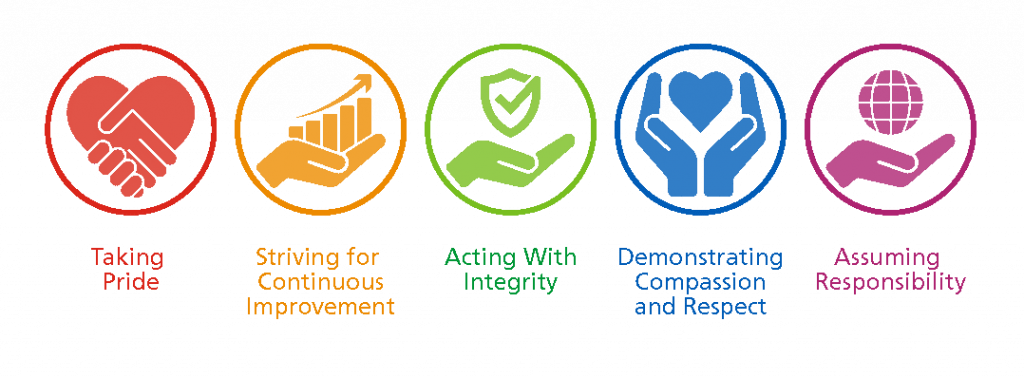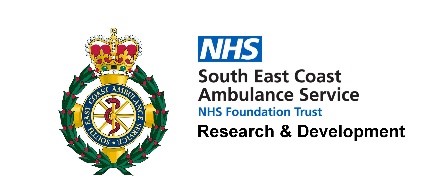South East Coast Ambulance Service
About the Service
South East Coast Ambulance Service NHS Foundation Trust is part of the National Health Service (NHS). We respond to 999 calls from the public, urgent calls from healthcare professionals and provide NHS 111 services across the region.
As a Trust South East Coast Ambulance service:
- Covers a geographical area of 3,600 square miles (Brighton & Hove, East Sussex, West Sussex, Kent, Surrey, and North East Hampshire).
- We work across a diverse geographical area of 3,600 square miles which includes densely populated urban areas, sparsely populated rural areas and some of the busiest stretches of motorway in the country.
- We have over 4,000 staff working across 110 sites in Kent, Surrey and Sussex. Almost 90 per cent of our workforce is made up of operational staff – those caring for patients either face to face, or over the phone at our emergency dispatch centre where we receive 999 calls.
- Our patients range from the critically ill and injured who need specialist treatment, to those with minor healthcare needs who can be treated at home or in the community.
Our values are the standards which everyone working at our Trust is expected to live up to.

Further details of SECAmb can be found on the Trust website: https://www.secamb.nhs.uk/
SECAmb’s Research and Development Department
As part of the extensive healthcare research network, SECAmb’s Research and Development Department works collaboratively with other Trust departments and external organisations/institutions and the professionals within, including the Clinical Research Network Kent, Surrey and Sussex (CRN KSS), Higher Education Institutions (HEIs), commercial/non-commercial organisations and other NHS Trusts from across England, Wales, Scotland and Northern Ireland.
Through this collaborative approach, the Research and Development Department continuously designs, develops, and delivers a variety of research studies, within an evolving healthcare system. We aim to augment the contribution of ambulance service research influencing overall evidence-based practice within our Trust and the broader NHS community. Given the sometimes-unscheduled nature of research, a definitive plan as to the themes being investigated at a given time, or their associated finances is not possible. This results in a broad and diverse portfolio of studies being undertaken each year that encapsulates both the Trust’s and wider healthcare network’s vision and strategy.

Publications and Conference Presentations
Published Papers (Trust authors)
- Barrett, J.W., Bennett Eastley, K., Herbland, A., Owen, P., Naeem, S., Mortimer, C., King, J., Foster, T., Rees, N., Rosser, A., Black, S., Bell, F., Fothergill, R., Mellett-Smith, A., Jackson, M., McClelland, G., Gowens, P., Spaight, R., Igbodo, S., Brown, M., Williams, J. (2024) The COVID-19 ambulance response assessment (CARA) study: a national survey of ambulance service healthcare professionals’ preparedness and response to the COVID-19 pandemic. British Paramedic Journal, 8(4), 10-20.
- Barrett, J.W., Williams, J., Skene, S.S., Griggs, J. E., Bootland, D., Leung, J., Da Costa, A., Ballantyne, K., Davies R. and Lyon R.M. (2023) Head injury in older adults presenting to the ambulance service: who do we convey to the emergency department, and what clinical variables are associated with an intracranial bleed? A retrospective case–control study. Scand J Trauma Resusc Emerg Med 31, 65. https://doi.org/10.1186/s13049-023-01138-1
- Couper, K., Ji, C., Lall, R., Deakin, C.D., Fothergill, R., Long, J., Mason, J., Michelet, F., Nolan, J.P., Nwankwo, H., Quinn, T., Slowther, A-M., Smyth, M.A., Walker, A., Chowdhury, L., Norman, C., Sprauve, L., Starr, K., Wood, S., Bell, S., Bradley, G., Brown, M., Brown, S., Charlton, K., Coppola, A., Evans, C., Evans, C., Foster, T., Jackson, M., Kearney, J., Lang, N., Mellett-Smith, A., Osborne, R., Pocock, H., Rees, N., Spaight, R., Tibbetts, B., Whitley, G.A., Wiles, J., Williams, J., Wright, A., & Perkins, G. D. (2024). Route of drug administration in out-of-hospital cardiac arrest: A protocol for a randomised controlled trial (PARAMEDIC-3). Resuscitation Plus, 17, 100544.
- Eaton-Williams P, & Williams J. (2024) ‘Family members screaming for help makes it very difficult to don PPE’. A qualitative study on UK ambulance staff experiences of infection prevention and control practices during the COVID-19 pandemic. Journal of Infection Prevention, 25(1-2): pp.17-23. https://doi.org/10.1177/17571774231209494
- McManamny, T., Ortega, M., Munro, S., Jennings, P., & Whitley, G. A. (2023). A pre-hospital mixed methods systematic review protocol. British Paramedic Journal, 8(2), 38-43.
- Munro, S., Cooke, D., Holah, J., & Quinn, T. (2023). The views, opinions and decision-making of UK-based paramedics on the use of pre-hospital 12-lead electrocardiograms in acute stroke patients: a qualitative interview study. British Paramedic Journal, 8(3), 1-10.
- Ollis, L., Skene, S. S., Williams, J., Lyon, R., & Taylor, C. (2023) The SEE-IT Trial: emergency medical services Streaming Enabled Evaluation In Trauma: study protocol for an interventional feasibility randomised controlled trial. BMJ Open 2023;13:e072877. doi: 10.1136/bmjopen-2023-072877
- Taylor, C., Ollis, L., Lyon, R. M., Williams, J., Skene, S. S., Bennett, K., Glover, M., Munro, S. & Mortimer, C. (2024). The SEE-IT Trial: emergency medical services Streaming Enabled Evaluation In Trauma: a feasibility randomised controlled trial. Scandinavian Journal of Trauma, Resuscitation and Emergency Medicine, 32(1), 1-15.
- Vadeyar, S., Buckle, A., Hooper, A., Booth, S., Deakin, C. D., Fothergill, R., Ji, C., Nolan, J.P., Brown, M., Cowley, A., Harris, E., Ince, M., Marriott, R., Pike, J., Spaight, R., Perkins, G.D. & Couper, K. (2023). Trends in use of intraosseous and intravenous access in out-of-hospital cardiac arrest across English Ambulance Services: A registry-based, cohort study. Resuscitation, 109951.
Published Papers (SECAmb participating site/PIC)
- Baghdadi F, Evans BA, Goodacre S, et al. (2023) Building an understanding of Ethnic minority people’s Service Use Relating to Emergency care for injuries: the BE SURE study protocol. BMJ Open 2023;13:e069596. doi: 10.1136/bmjopen-2022-069596
- Brown, S., Noakes, T., Foster, T., & Prothero, L. (2023). An in-depth qualitative interview study of female ambulance staff experiences of the menopause transition (CESSATION phase 3). British Paramedic Journal, 8(3), 20-26.
- Charlton, K., & Bate, A. (2024). Factors that influence paramedic decision-making about resuscitation for treatment of out of hospital cardiac arrest: Results of a discrete choice experiment in National Health Service ambulance trusts in England and Wales. Resuscitation Plus, 17, 100580.
- Noble, A. J., Morris, B., Bonnett, L. J., Reuber, M., Mason, S., Wright, J., Pilbery, R., Bell, F., Shillito, T., Marson, A.G. & Dickson, J. M. (2024). ‘Knowledge exchange’ workshops to optimise development of a risk prediction tool to assist conveyance decisions for suspected seizures–Part of the Risk of ADverse Outcomes after a Suspected Seizure (RADOSS) project. Epilepsy & Behavior, 151, 109611.
- Boyd, A., Sampson, F. C., Bell, F., Spaight, R., Rosser, A., Coster, J., … & Pilbery, R. (2024). How consistent are pre-alert guidelines? A review of UK ambulance service guidelines. British Paramedic Journal, 8(4), 30-37.
- Wilson, C., Budworth, L., Janes, G. et al. Prevalence, Predictors and Outcomes of Feedback for Ems Professionals: a Mixed-methods Diary Study, 13 March 2024, PREPRINT (Version 1) available at Research Square [https://doi.org/10.21203/rs.3.rs-4014306/v1]
- Yang, L., Hollis, C., Stewart, E., MacGregor, K., Bass, S., Savage, E., & Minton, O. (2023). Evaluation of Palliative Care Related Hospital Admissions in a Regional Centre. American Journal of Hospice and Palliative Medicine®, 10499091231211470.
Published Abstracts/Poster Presentations (Trust authors)
- Patel G, Botan V, Phung V, Trueman I, Pattinson J, Hosseini SMP, Ørner R, Asghar Z, Smith MD, Rowan E, Spaight R, Evans J, Brewster A, Mountain P, Mortimer C, Miller J, Brown M, Siriwardena AN. (2023) PP44 Consensus on innovations and future change agenda in community first responder schemes in England: a national Nominal Group Technique study. Emergency Medicine Journal 2023;40:A18.
- Walton, H., Aghoram, P., Bray, G., Dearling, J., Fulop, N. J., Hall, C., … & Ramsey, A. I. (2023). Stroke prehospital video triage for suspected stroke patients: Qualitative analysis of implementation and stakeholder experience in four areas of the English NHS. 999 EMS Research Forum, Manchester. http://hdl.handle.net/20.500.12417/1601.
- College of Paramedics Webinar Series. April 6-19, 2023. Head injuries in older adults. Part one: Non-conveyed patients, a hidden population. Part two: Which patients are at risk of a bleed? Part three: In guidelines, we trust – Why are we conveying head-injured older adults to the emergency department? Jack Barrett.
- College of Paramedics National Conference. Nottingham. May 23-24, 2023. British Paramedic Journal Golden Nugget [Oral] Presentations: Critical Care Paramedics’ Experiences of Performing an Emergency Scalpel Cricothyroidotomy: A Qualitative Study. Mark Durham.
- Primary Care Respiratory Society (PCRS) Respiratory Conference. Telford. September 21-23, 2023. Abstract oral presentations; Asthma: Paramedics’ perceptions of asthma patients and the use of β2 agonists within the acute setting. Craig Mortimer.
Current studies
For details of current studies please access SECAmb’s Research and Development website at: https://www.secamb.nhs.uk/how-we-do-it/research-development/
Contact details
Please contact us at: research@secamb.nhs.uk
